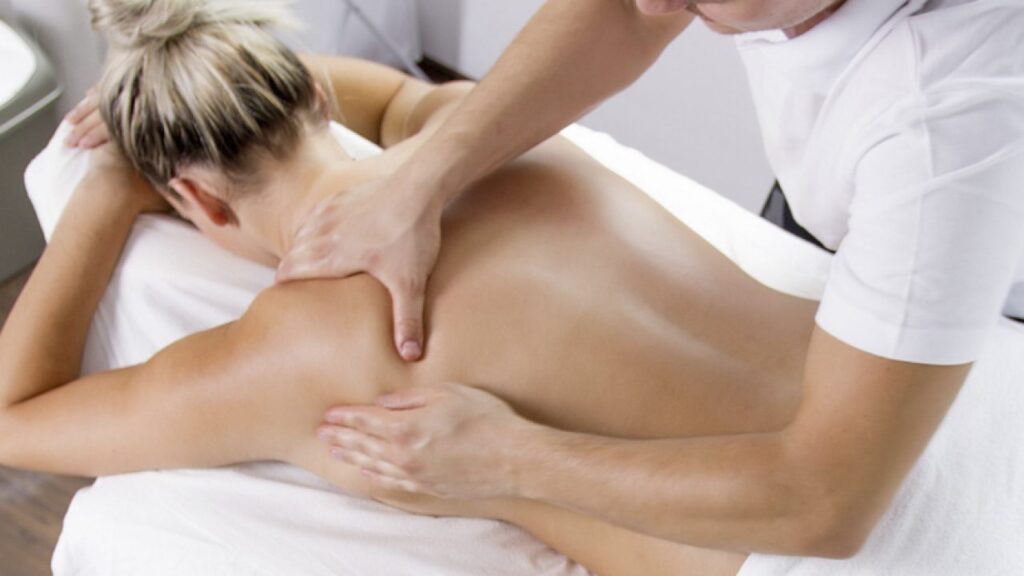
Choosing the right massage therapy can be a pivotal factor in managing and alleviating pain effectively. With a myriad of styles available, each offering distinct benefits and techniques, it’s crucial to select one that aligns with your specific type of pain and health condition.
This guide will help you navigate through the options and arm you with the knowledge to choose the perfect therapy that best addresses your pain and enhances your overall well-being.
Whether you’re dealing with chronic pain, recovering from an injury, or simply looking to relieve stress, understanding the nuances of each massage type can lead to more targeted and successful outcomes. If you’ve been wondering which type to choose, check out 마사지사이트.
Table of Contents
The First Step

Source: massagehaveninc.com
Before selecting a massage, it is crucial to understand the type of pain you are experiencing. Pain can broadly be categorized into two types: acute and chronic. Acute pain signals immediate injury to the body and is usually of a short duration. It acts as a warning of disease or a threat to the body. Chronic pain persists for longer periods and often resists medical treatments. It might follow from acute pain or be due to long-term diseases like arthritis.
Importance of Identifying Pain Source
Identifying the source of your pain aids in selecting the most effective therapy. For example, muscle tension or injuries require different massage techniques than pain stemming from nerve damage or chronic conditions.
Consult a healthcare provider to diagnose the pain correctly, as this determines the appropriate therapy. Understanding the origin of pain can also prevent the condition from worsening and contribute to a more tailored treatment plan. Accurate diagnosis can lead to faster recovery times and prevent the misuse of generic or unsuitable therapies.
Types of Massages for Pain Relief
Swedish Massage

Source: tarathomasbodyandskin.com
This is often recommended for beginners and those dealing with widespread chronic pain like fibromyalgia. It employs long, soft, kneading strokes along with rhythmic tapping strokes on the topmost layers of muscles. This technique can be particularly soothing and relaxing, helping to relieve muscle tension and may even help after an injury. It enhances blood circulation, which promotes healing and reduces stress levels. Swedish massage also helps flush out toxins from the body, contributing to better overall health.
Deep Tissue Massage
Ideal for chronic muscle pain, strain injuries, and issues like sciatica, deep tissue massage applies pressure using slow, deep directed strokes and firm pressure designed to relieve severe tension and reach below the superficial muscles. This type is best used on concentrated areas of pain and tension.
Sports Massage

Source: lovinglifeco.com
Designed for athletes but beneficial for anyone with chronic pain, repetitive injury, or restricted range of motion, sports massage focuses on the areas of the body that are overused and stressed from repetitive and often aggressive movements. Aspects of this type are similar to those of Swedish and deep tissue massage but are tailored specifically to deal with athletic performance and recovery. It often includes elements of stretching and flexibility training. Incorporating it into regular training routines can prevent injuries and enhance athletic endurance.
Neuromuscular Therapy
This form of manual therapy focuses on reducing pain through specific targeted massage techniques. The manipulation of soft tissues, and the nervous and muscular systems, helps manage pain and stimulate the body’s own healing processes. It is particularly useful for back pain, migraines, and neck stiffness, and for enhancing the rehabilitation process from large muscle injury. Neuromuscular therapy addresses biomechanical problems that can be caused by muscular imbalances, improving posture and mobility.
Myofascial Release

Source: zeel.com
Focusing on pain originating from myofascial tissues—the tough membranes that wrap, connect, and support your muscles—myofascial release helps relieve somatic muscle tension and pain. This technique involves gentle, sustained pressure on the myofascial connective tissue. It is effective for treating conditions such as TMJ, fibromyalgia, and post-injury trauma. The approach is known to improve blood and lymphatic circulation, enhancing the movement of nutrients to the tissues and the removal of waste products.
How to Prepare for a Massage

Source: yahoo.com
To get the most benefit from your massage, you should adequately prepare for it. Ensure you are well-hydrated, avoid eating a heavy meal before your session, and arrive with enough time to relax and discuss any concerns with your therapist. Providing the therapist with a comprehensive health history and the specific pain areas will further tailor the session to your needs
The Bottom Line
By understanding the type of pain you’re experiencing, identifying its source, and choosing the correct type of massage and therapist, you can significantly enhance your ability to manage and alleviate your pain through massage therapy.







